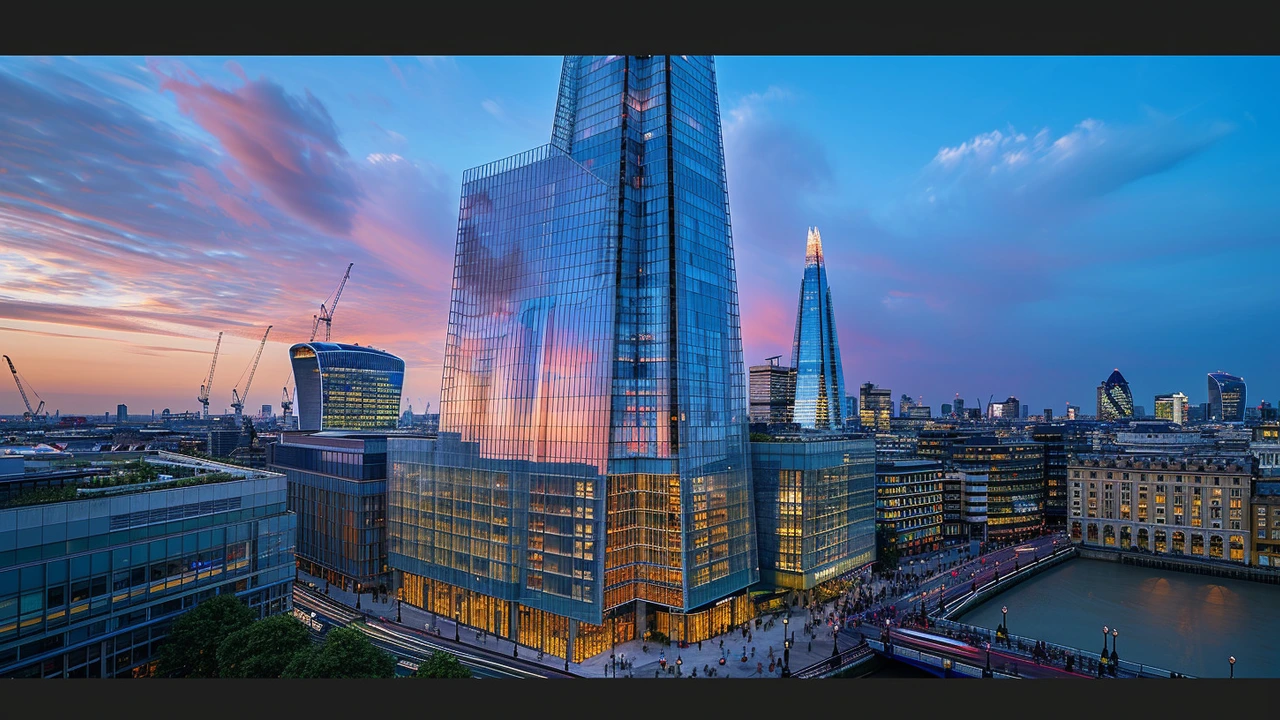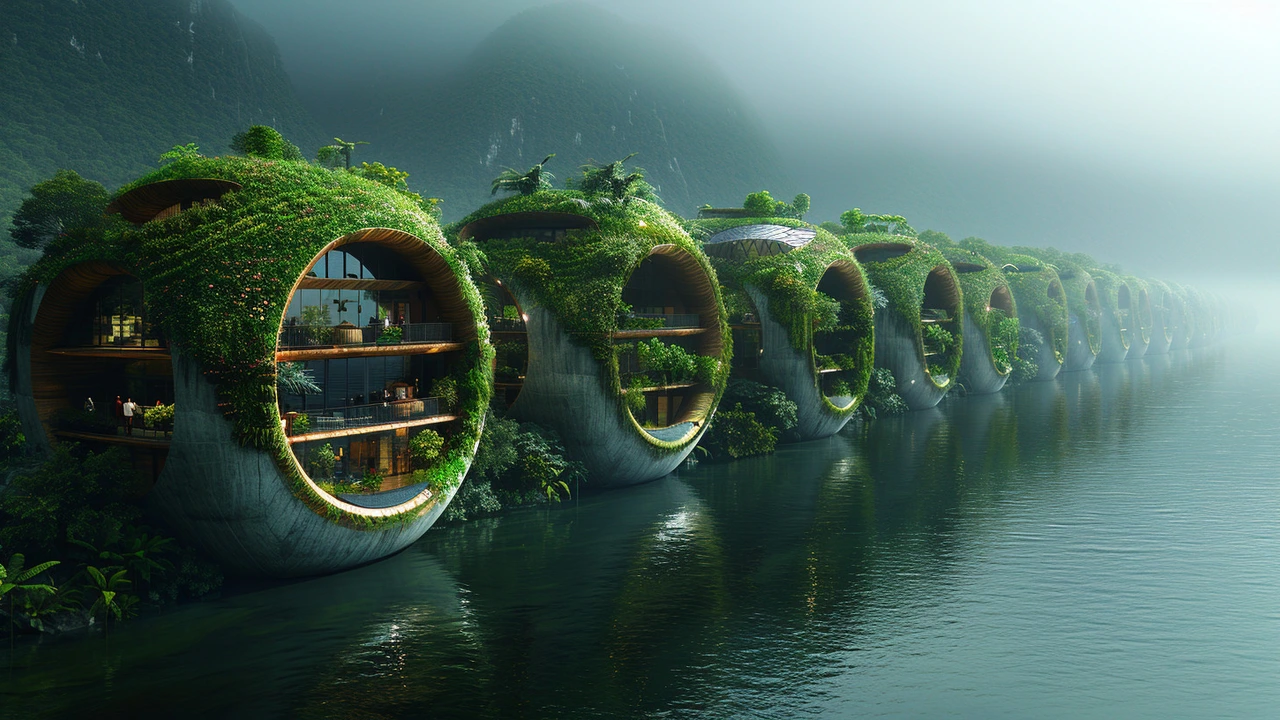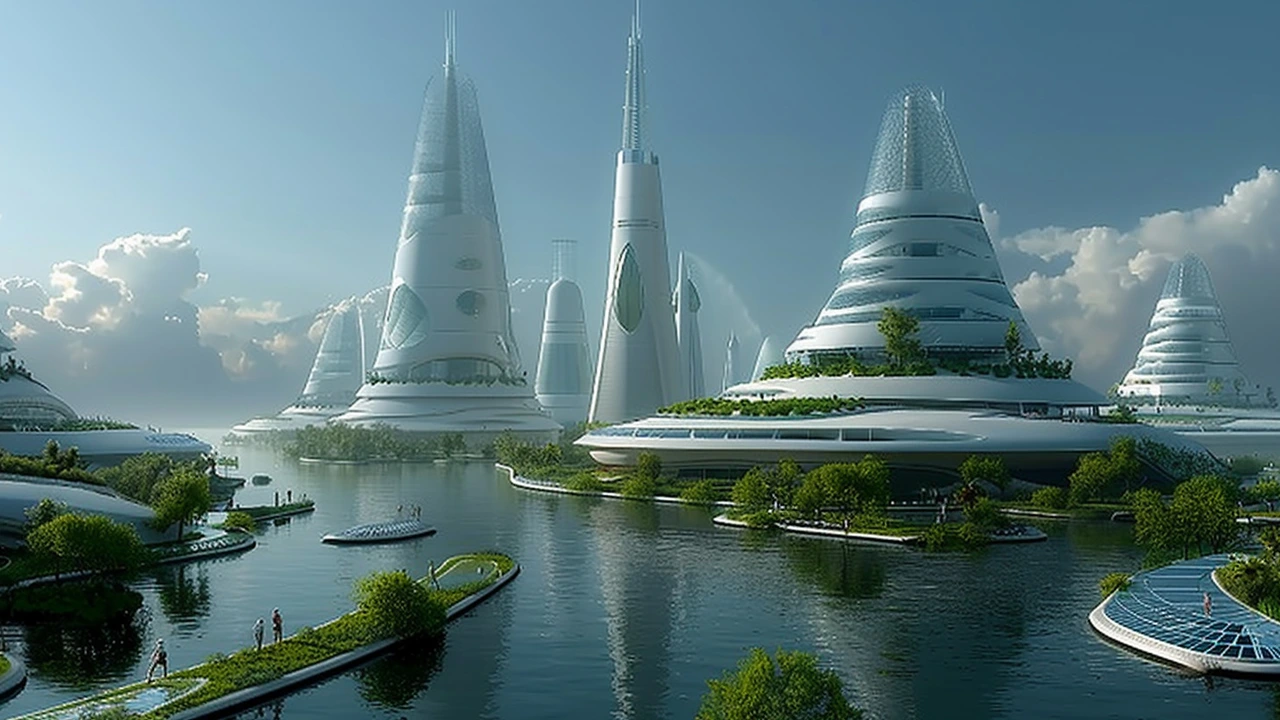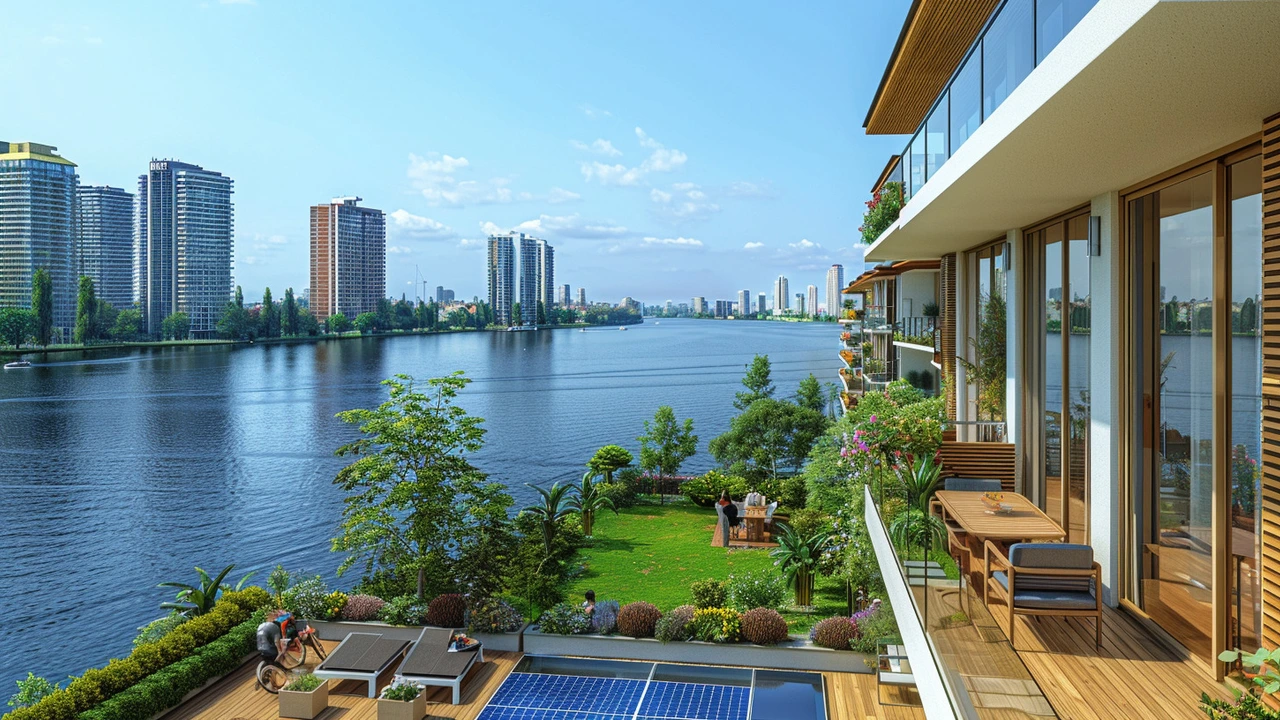A New Dawn in Sustainable Architecture: Designing for the Future
 May, 25 2024
May, 25 2024
As our planet faces increasing environmental challenges, the field of architecture is responding with creativity and innovation. Sustainable architecture isn't just a trend; it represents a necessary shift towards designing buildings that harmonize with the environment.
This approach emphasizes responsible use of resources and creating spaces that promote well-being for both people and the planet. From energy efficiency to the use of renewable materials, sustainable architecture is setting new standards for how we construct our world.
In this article, we explore what makes a building sustainable, the cutting-edge materials and technologies at the forefront of this movement, inspiring real-world examples, and practical advice for anyone looking to embark on their own eco-friendly building projects.
- Understanding Sustainable Architecture
- Innovative Materials and Technologies
- Case Studies of Sustainable Buildings
- Practical Tips for Sustainable Design
Understanding Sustainable Architecture
The concept of sustainable architecture revolves around creating buildings that have minimal impact on the environment. It considers the entire lifecycle of a building, from design to demolition. At its core, sustainable architecture aims to reduce waste, utilize renewable energy sources, and create healthier living spaces. This is becoming increasingly important as the world faces challenges like climate change and resource depletion. Architects and builders are now finding innovative ways to make structures more eco-friendly while still maintaining functionality and aesthetic appeal.
Principles of Sustainable Architecture
There are several key principles that define sustainable architecture. One of the most important is energy efficiency. This involves designing buildings that use less energy for heating, cooling, lighting, and other functions. For example, orienting a building to maximize natural daylight and using high-quality insulation can significantly reduce energy consumption. Additionally, sustainable buildings often incorporate renewable energy sources like solar panels, wind turbines, or geothermal systems.
Another crucial principle is the use of sustainable materials. These are materials that are either recycled, recyclable, or sourced in an environmentally responsible manner. Bamboo is a popular choice because it grows rapidly and requires minimal resources. Similarly, reclaimed wood and recycled metal are often used in sustainable architecture. This not only reduces the strain on natural resources but also cuts down on the carbon emissions associated with material production.
Sustainable architecture also prioritizes water conservation. This can be achieved through methods like rainwater harvesting, low-flow fixtures, and greywater recycling systems. In some cases, architects design landscapes that require less water by using native plants that are adapted to the local climate. By reducing water usage, sustainable buildings help conserve a critical resource and lower utility costs.
Health and Well-being
Beyond environmental benefits, sustainable architecture also focuses on the health and well-being of the occupants. This is often referred to as creating

Innovative Materials and Technologies
In the journey towards a more sustainable future, one major step has been the development and utilization of innovative materials and cutting-edge technologies. These advancements are pushing the boundaries of what’s possible in building design and construction.
One fascinating material is cross-laminated timber (CLT). This engineered wood product offers the same strength as steel or concrete but has a much smaller carbon footprint. CLT is also versatile and can be used in walls, floors, and roofs. The natural beauty of wood adds an aesthetic appeal that’s hard to match, making it a favorite among architects.
Another revolutionary material is self-healing concrete. Cracking is a common issue in traditional concrete structures, but self-healing concrete incorporates bacteria that produce limestone when they come into contact with water. This helps close up cracks and extends the lifespan of the concrete, reducing the need for repairs.
Recycled materials are also gaining popularity. For example, there are now bricks made from recycled plastic waste. This not only diverts plastic from landfills but also creates durable and lightweight building materials. Using recycled glass in flooring and countertops is another clever way to reduce environmental impact while adding a unique visual element to interiors.
Advanced Technologies
Technological advancements are just as critical as new materials. Building Information Modeling (BIM) is a game changer in sustainable architecture. BIM allows for comprehensive planning and management of building projects. It creates digital representations of physical and functional characteristics of places, enabling architects to optimize energy efficiency and manage resources better.
Another exciting technology is energy-efficient lighting. By using LED lighting and smart controls, buildings can significantly reduce energy consumption. Smart systems can adjust lighting based on occupancy and natural light availability, enhancing both energy savings and occupant comfort.
"The future of sustainable building lies in the integration of innovative materials and smart technologies," says Jane Smith, a renowned sustainable architecture expert. "These advancements are not just beneficial; they are essential for the health of our planet."
Solar panels have been around for a while, but advancements in solar technology are making them more efficient and affordable than ever. Thin-film solar panels, for example, are lightweight and flexible, making them easy to integrate into various building surfaces. They can be installed on roofs, walls, and even windows, providing a versatile solution for renewable energy generation.
We can't forget about green roofs and walls. These are more than just visually appealing. They provide insulation, reduce stormwater runoff, and improve air quality. By integrating vegetation into buildings, architects can create urban oases that support biodiversity and enhance residents' well-being.
With these exciting materials and technologies, the architecture industry is not only creating buildings that are more resilient and eco-friendly but also paving the way for a more sustainable future. As we continue to discover and implement these innovations, the possibilities for creating a more harmonious built environment are endless.

Case Studies of Sustainable Buildings
Establishing eco-friendly architecture takes more than innovative materials and theoretical knowledge—it requires real-world application. Here, we explore notable examples of sustainable buildings that have successfully integrated environmental consciousness into their design and construction. These structures not only minimize negative impacts on the environment but also set benchmarks for future projects across the globe.
The Bullitt Center, Seattle
Dubbed the greenest commercial building in the world, the Bullitt Center in Seattle sets a high bar for sustainable architecture. This six-story structure generates its own electricity with rooftop solar panels, captures and reuses rainwater, and even treats its own sewage. The building's eco-friendly design includes operable windows that provide natural ventilation, reducing the need for air conditioning. Inside, you’ll find non-toxic materials ensuring healthy indoor air quality. The Bullitt Center achieves its net-zero energy status, meaning it produces as much energy as it consumes over the course of a year.
The Bullitt Foundation President, Denis Hayes, aptly said, "If it's not good enough for our employees to breathe, then it's not good enough for anybody to breathe."
Bahrain World Trade Center
Another marvel is the Bahrain World Trade Center, known for its distinctive sail-shaped design and integrated wind turbines. These turbines, mounted between its twin towers, harness the region’s wind energy, supplying about 15% of the building’s total power needs. This pioneering feature demonstrates how renewable energy can be seamlessly incorporated into skyscraper designs without compromising aesthetics. The emphasis is on utilizing the natural resources available in the building's surroundings to generate power, establishing it as a model of sustainable urban architecture.
The Edge, Amsterdam
The Edge in Amsterdam is often lauded as one of the smartest and most sustainable office buildings globally. Its comprehensive use of technology allows for maximum efficiency and minimal waste. The building uses a sophisticated energy management system that adapts lighting and heating based on occupancy, contributing to its net-zero energy status. Solar panels cover the roof and southern wall, ensuring a significant portion of its electricity comes from renewable sources. The Edge’s environmental performance has earned it numerous accolades, setting a standard for future sustainable office designs worldwide.
One Angel Square, Manchester
The UK’s One Angel Square is another significant case study in sustainable architecture. This office building boasts a BREEAM ‘Outstanding’ rating, the highest possible score in the UK’s environmental assessment framework. Its double skin facade improves thermal performance, and the building's design takes advantage of natural light to reduce electricity usage. Additionally, One Angel Square uses a combined heat and power plant fueled by waste cooking oil, underlining the innovative approaches being employed to achieve energy efficiency. The building embodies the principles of green design while serving as a functional workspace for thousands of employees.
In each of these case studies, the fusion of environmentally conscious design with technological innovation illustrates that sustainable buildings are not only viable but also advantageous. These examples highlight the diverse methods that can be employed to reduce a building's environmental footprint while maintaining functionality and aesthetics. By studying these pioneering projects, we gain insights and inspiration for developing future buildings that prioritize the health of our planet.

Practical Tips for Sustainable Design
Moving towards sustainable architecture can seem daunting at first, but there are plenty of practical steps that can guide you along the way. One of the most critical aspects of sustainable design is minimizing the energy demands of a building. This can be achieved through passive design strategies such as optimizing the orientation of the building to maximize natural light and heat during the winter months while minimizing overheating during the summer. For instance, proper window placement and the use of materials with high thermal mass can significantly reduce the need for artificial heating and cooling.
Another tip is to utilize renewable energy sources whenever possible. Installing solar panels or wind turbines can help power the building with clean energy, reducing reliance on fossil fuels. In regions with ample sunlight, solar panels can cover a substantial portion of a building's energy needs. Combining renewable energy systems with energy-efficient appliances and lighting can further enhance the sustainability of a design.
Water conservation is another crucial element of sustainable architecture. Incorporating rainwater harvesting systems and low-flow fixtures can dramatically reduce water consumption. Additionally, designing landscapes with native plants can minimize the need for irrigation. Greywater recycling systems also play a vital role by reusing water from sinks and showers for landscaping or flushing toilets.
Material selection plays a significant role in sustainable building practices. Opting for locally sourced and recycled materials helps reduce the environmental footprint. For instance, using reclaimed wood or recycled steel can provide the necessary structural integrity without depleting natural resources. Moreover, choosing non-toxic, low-VOC (volatile organic compound) materials for interiors can improve indoor air quality, promoting healthier living environments.
Implementing a green roof or living wall is another effective way to enhance the sustainability of a building. Green roofs provide insulation, reducing energy costs and mitigating the urban heat island effect. They also promote biodiversity by providing habitats for various species. Living walls can improve air quality and offer additional insulation, while also serving as a visually stunning feature.
“The greenest building is the one already built,” says Carl Elefante, a renowned architect. His statement emphasizes the importance of retrofitting and reusing existing structures, which can be more sustainable than constructing new ones.
Ensuring proper ventilation and air exchange is essential for maintaining a healthy indoor environment. Incorporating natural ventilation strategies, such as operable windows and vents, can reduce the need for mechanical ventilation and improve indoor air quality. Additionally, using energy recovery ventilators (ERVs) can capture and recycle energy from exhaust air, further increasing the building's energy efficiency.
Advanced Technologies and Smart Design
The integration of advanced technologies and smart design can significantly boost a building's sustainability. Smart thermostats, lighting systems, and occupancy sensors can optimize energy usage by adjusting settings based on real-time data. For example, a smart thermostat can learn a household's schedule and adjust heating and cooling accordingly, while occupancy sensors can turn off lights in unoccupied rooms.
Furthermore, Building Information Modeling (BIM) and energy modeling software can aid in designing more efficient buildings. These tools allow architects and engineers to simulate different scenarios and assess the building's performance before construction begins. This proactive approach ensures that sustainable design principles are effectively implemented from the outset.
By embracing these practical tips and sustainable strategies, designers and architects can contribute to a greener future. Each step towards sustainability, no matter how small, plays a part in creating a built environment that respects and nurtures our planet.